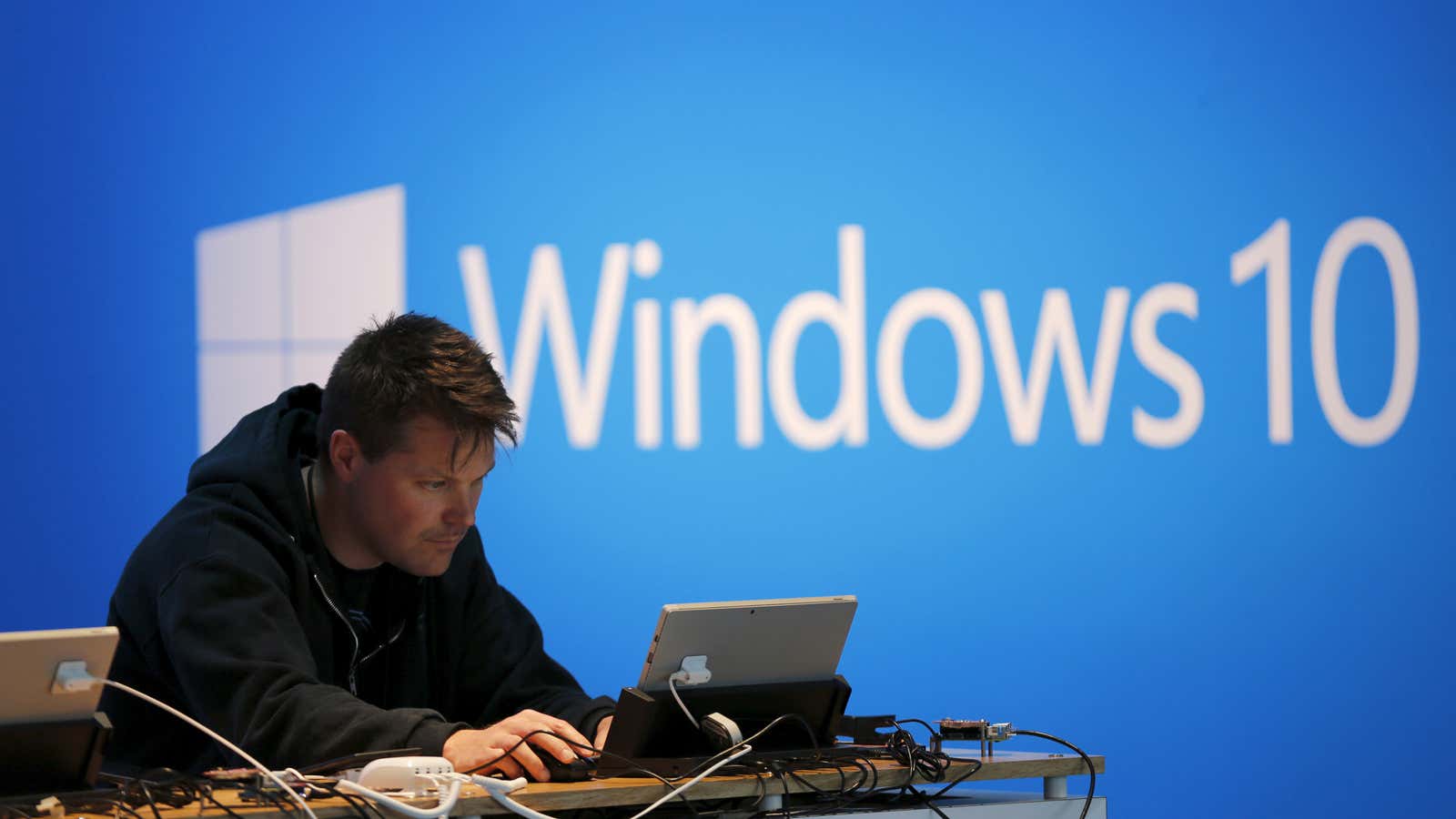On Friday (July 29), Microsoft will stop offering a free upgrade to its latest operating system, Windows 10, for customers running older software such as Windows 7 and 8.
While generally poor reviews of Windows 8 led many people to stick with Windows 7 on their computers, and the reviews for Windows 10 have been relatively mixed, Microsoft has said that its latest operating system will be its “last.” What this will likely mean in practice, rather like the OS X branding for Apple computers, is that Windows 10 will grow and adapt over time, rather than be replaced in a few years with an entirely new operating system.
Theoretically, then, it should get better with time as more people use it and more time is spent on its development.
If you’re still on the fence about upgrading, there are a few other good reasons why you should take Microsoft up on the free-upgrade offer before it expires:
- You’ll save money. If you wait, it’ll cost you at least $100 to upgrade later—that’s the starting price for a new license for Windows 10.
- The Start menu. The bar that Windows users have employed to navigate through Microsoft operating systems since 1995 is back in Windows 10. (It disappeared for a while from Windows 8, confusing many.)
- Security issues and support. Upgrades to operating systems tend to include security enhancements and patches for any vulnerabilities uncovered in old versions of software. Not upgrading can potentially leave your computer vulnerable. What’s more, Microsoft intends to stop supporting Windows 7 in 2020.
- Upgrades to other programs. There will come a time when other companies stop supporting older operating systems. You might not be able to install the drivers needed to play the latest games, or use peripherals like new printers, if you don’t keep up with the available upgrades.




